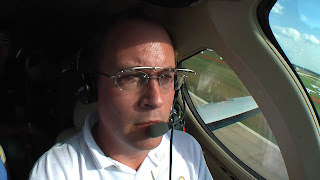
This is a regular blog post. If you’re looking for show notes or links to show audio, please check out the other posts.
Still out in the campground at Oshkosh, but wanted to get a post up with some frame grabs from the Cessna Citation mustang flight. Certainly more to some on this, but I couldn’t help but post a few of the more interesting frame grabs.
This one is on takeoff just after rotation. Geat coming up and climbing out.

Hand-flying the aircraft to altitude.

In one of the steep turns. David Allen kept the camera level using the horizon and/or the PFD to give a sense of the bank angle.

About to land. 110 KIAS and the airspeed tape is just stinking frozen. Painted on!
Cole in the back seat upon hearing the gear horn for the first time.
More to come! This was a spectacular ride and the audio, video, and notes are tucked away and ready for editing.








